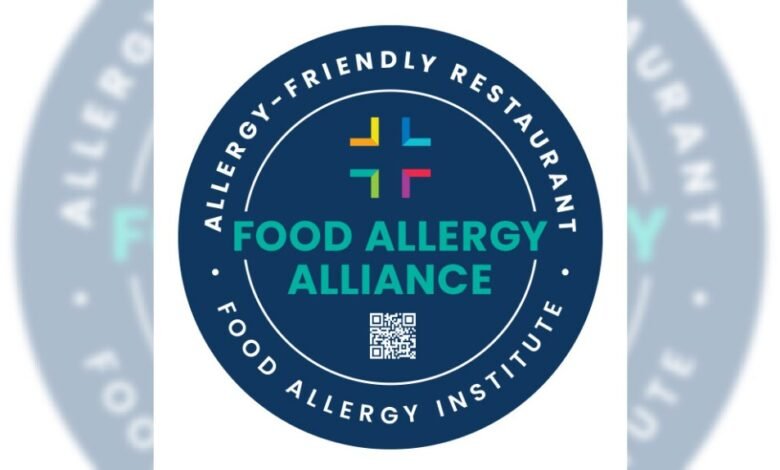New sticker program aims to help restaurants better serve food-allergy sufferers – Orange County Register

From wheat and dairy to frequent offenders peanuts and shellfish, there are approximately 160 ingredients found in common dishes that can trigger allergic reactions in people, according to the Food and Drug Administration. The Food Allergy Institute in Long Beach has launched an initiative called the Food Allergy Alliance, a program that hopes to help turn restaurants into literal safe spaces for food-allergy sufferers.
“We’re talking around 33 million people that are afflicted with severe food allergies,” said Sean Conley, communications specialist with the Food Allergy Institute. “And about 11 million of those people are kids.”
According to the Centers for Disease Control and Prevention (CDC), food allergies affects 6% of adults and an estimated 8% of children (1 in 13) in the United States, with “the big nine” being milk, eggs, fish, shellfish, tree nuts, peanuts, wheat, soybeans and sesame.
To help restaurants and their staff learn more about food allergy issues, ranging from harmful ingredients to proper EpiPen use, the nonprofit organization, founded by Dr. Inderpal Randhawa, created a training program that, once completed, allows eateries to place a sticker on their window denoting food allergy-friendliness. The program will initially work with restaurants in Long Beach and Orange County, but the alliance hopes to expand it throughout Southern California.
“What we devised is a sticker that says ‘food allergy-friendly restaurant’ that shows possible patrons that this is a place approved by the Food Allergy Institute,” said Conley.
In order to obtain a sticker, restaurants can request their staff to take part in education about food allergens by the Food Allergy Institute. The courses, which are free of charge, can be done virtually, on site at the restaurants or at the institute’s Long Beach headquarters. The stickers will come with a three-tier rating system: tier one being basic knowledge of food allergies (e.g., signs of anaphylaxis compared to choking); tier two would be more involved like, for example, a restaurant providing a food allergy-friendly menu item; and tier three would be more in-depth – e.g., having an allergen-friendly section of the restaurant.
So far only one place is in line to receive a sticker, Thai District in Long Beach. The eatery is currently in the process of finishing training in EpiPen administering and providing an allergen-free menu. Appu Cafe in Long Beach is also slated to take part in the program.
Unlike the health department ratings posted in restaurant windows, wherein restaurants are required to post A, B or C grades for hygiene and food safety that are based on unannounced health department visits, the Food Allergy Alliance program is voluntary.
“There’s no type of legislation required for this particular program,” said Conley. “We just think it’s a good idea when it comes to educating restaurants who want to go one step further in making their restaurants safe for food-allergy patients.”
Source link




